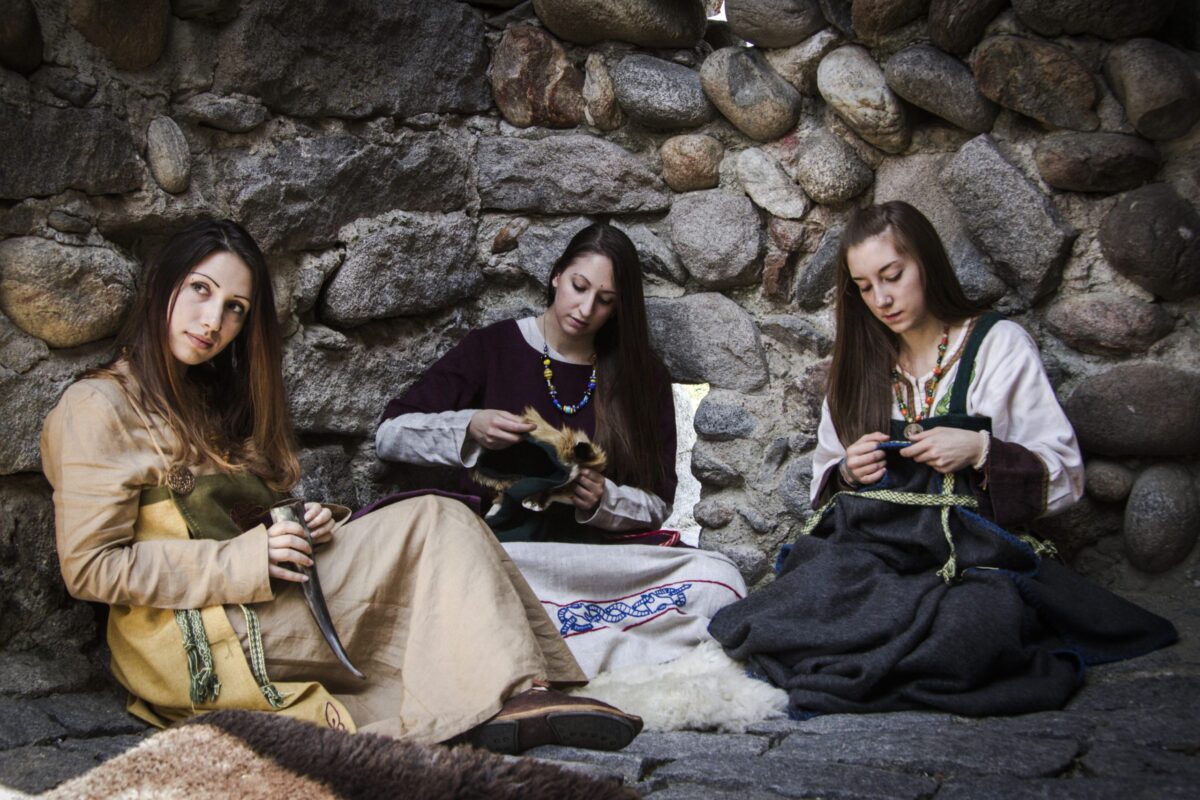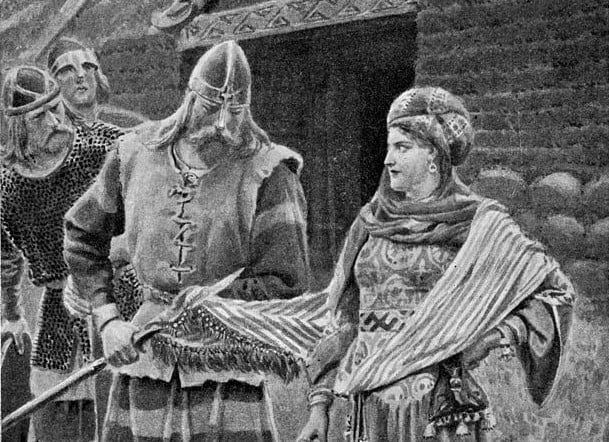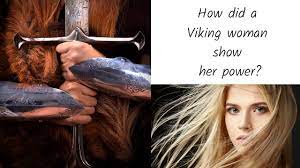Viking
Viking Women Power
On the day of their marriage, Viking women were given the keys to the chest and farm door by the husband’s family.
“Key Box Hand”
In the National Museum of Antiquities in Sweden’s Stockholm, there are eight keys from the Viking Age (793 – 1066). All of them were discovered through archaeological excavations in the Värnamo region, Jönköping and are identical in appearance.
Beyond this place and across Europe, archaeologists have discovered a series of keys in Viking settlements. Most of them, cast in bronze or iron, were found in the graves of women.
While Viking men are talked about everywhere, Viking women are barely mentioned. The discovery of a series of keys has helped researchers and historians confirm their role and place in Viking social life.
Viking women married early, usually between the ages of 12 and 15, and in an arranged marriage. However, in the meeting and negotiation between the two parties, the bride still has a voice as well as the right to decide.
Viking women’s power and duties begin the day they become married. It was on this day that they were given the most valuable thing by their husband’s family: the key to the chest and the key to the farm door.
Observation of the keys discovered by archeology shows that there are 2 types, large keys (about 18 cm) and small keys (about 11 cm), oval or round in shape, the handle is decorated with an elaborate decoration. decorated with animal or vegetable motifs.
If the Viking man’s responsibility is to “make money outside”, then the woman’s role is to “manage the inside”. The chest key represents money management and the farm key represents property management.
Viking women shoulder all the housework, from cleaning the house, cooking, preserving food, sewing to giving birth, raising children and taking care of the elderly. Since Viking men spent most of their lives as warriors, women carried all the farm work.
They manage from breeding, planting, harvesting to hiring workers, managing slaves, performing rituals, hoarding, trading… In addition, women also learn and impart knowledge about herbs, healing methods and medical treatment for injured and sick family members.
Some Viking women rose to particularly high status. In the Scandinavian Peninsula, archaeologists discovered a lavish tomb belonging to “queen” Oseberg. She was buried in a lavishly decorated ship filled with valuable burial paraphernalia. In the Hebrides, an archipelago off the coast of Scotland, was also found the luxurious tomb of Queen Aud, the daughter of a Norwegian chieftain who was married to the Viking king based in Dublin.
Take the right to divorce
Viking women love bright colors, often sew dresses and bibs with colorful fabrics, use a lot of jewelry and accessories such as brooches, necklaces, bracelets, earrings, pins… and especially not Never forget to wear necklaces or belts with attached key chains.
Usually, they wear a keychain and a small sheathed knife, a pair of scissors or a needle case. With the key always with them, Viking women are not only convenient in house and property management, but also play a pivotal role. In particular, if married life is not as happy as desired, they have the right to file a divorce request.
Historical documents from Iceland record that the Viking divorce law was very advanced. While most territories in contemporary Europe were canonically forbidden to divorce, the Vikings not only allowed divorce but also let women take the initiative.
The wife has the right to request a divorce in many cases, the most common are 3 cases: The husband has settled in another land, the husband has not performed the “marital obligations” for 3 years, and the husband has 3 years. times of violence against his wife.
To conduct a divorce, women summon witnesses, declare the divorce a total of 2 times, once in front of the house and once in bed. After the divorce, if the children are too young, they will follow their mother, and when they are grown up, depending on the family situation, they will continue to live with their mother or follow their father. Property and inheritance rights are also divided and handled satisfactorily.
Although historical records do not record divorce rates during the Viking Age, with the right to divorce, women have independent legal status. Coupled with their equality in both physical and mental health, they are clearly self-determined individuals with human rights equal to and even slightly better than men.
Another thing that we are constantly curious about is that Viking women have any warriors? According to historian Johannes Skylitzes (1040 – 1101), in the battle between the Varangians and the Bulgarians in 971, there were probably female warriors who entered the battle.
In the 12th century, historian Saxo Grammaticus (1160-1220) also wrote, Viking warrior women dressed like men, passionately practiced swordsmanship and other martial arts, fought bravely like female knights.
Grammaticus also believes that in the 8th century, the Vikings had an army of 300 women. Written literature calls the Viking female warriors Valkyries, describing them as strong, seductive, and shield-wielding.
Although history does not confirm the existence of female Viking warriors, Viking women are certainly strong women. In the role of administrators and managers of the family, they are ready to take up arms and fight against those who threaten the life and property of themselves as well as those in the family.



